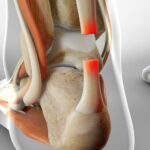Living with chronic pain can be a constant battle, but understanding and managing Complex Regional Pain Syndrome (CRPS) can make a significant difference in your quality of life. This article will cover CRPS, its causes, symptoms, diagnostic criteria, and various treatment options available to those suffering from this debilitating condition.
What is CRPS and its Causes?
CRPS is a chronic pain condition that affects one limb, usually occurring after an injury, surgery, stroke, or heart attack. This type of pain is disproportionate to the initial injury, and in some cases, the pain becomes more severe and affects different parts of the body, too. In such instances, it is important to consult an experienced doctor for complex regional pain syndrome in Chicago who can provide proper diagnosis and treatment. They can identify the cause and underlying factors that contribute to the development of CRPS.
Symptoms and Diagnostic Criteria
The symptoms of CRPS vary in severity and duration and can be divided into three stages. In the early stage, individuals experience localized pain, swelling, and differences in skin color and temperature. As the condition advances, the symptoms become more severe, with muscle atrophy and joint stiffness becoming more evident. In the final stage, significant changes in bone and muscle and irreversible skin changes occur.
To diagnose CRPS, doctors rely on the Budapest criteria, which include four symptom categories: sensory, vasomotor, sudomotor/edema, and motor/trophic. Patients must exhibit signs and symptoms from at least three of these categories to be diagnosed with CRPS.
Treatment Options for CRPS
There is no one-size-fits-all treatment for CRPS, but a multidisciplinary approach that combines physical therapy, medication, and psychological support often yields the best results. Some common treatment options include:
- Physical Therapy: Physical therapy is crucial in restoring the function and mobility of the affected limb. A therapist may use various techniques such as stretching, strengthening exercises, and mirror therapy to help patients manage their pain.
- Medication: Doctors often prescribe medications to help patients manage their pain, reduce inflammation, and prevent further damage to the nerves. The medication might include over-the-counter pain relievers, anti-inflammatory drugs, and antidepressants.
- Interventional Pain Management: For patients who don’t find relief from conservative treatments, interventional pain management techniques might be considered. One option for those seeking assistance with their complex regional pain syndrome involves nerve blocks, spinal cord stimulation, or even ketamine infusions.
- Psychological Support: Since CRPS can severely impact mental health, seeking psychological support through counseling or joining a support group can be extremely helpful in coping with the emotional pain that comes with living with CRPS.
Conclusion
Knowing the facts about complex regional pain syndrome can help patients understand the condition and manage the pain. Early diagnosis and intervention are critical for improving the quality of life for those suffering from CRPS. Remember, there is help available, and you don’t have to fight CRPS alone. Reach out to pain management specialists and explore your options to begin your journey toward better health and well-being.







